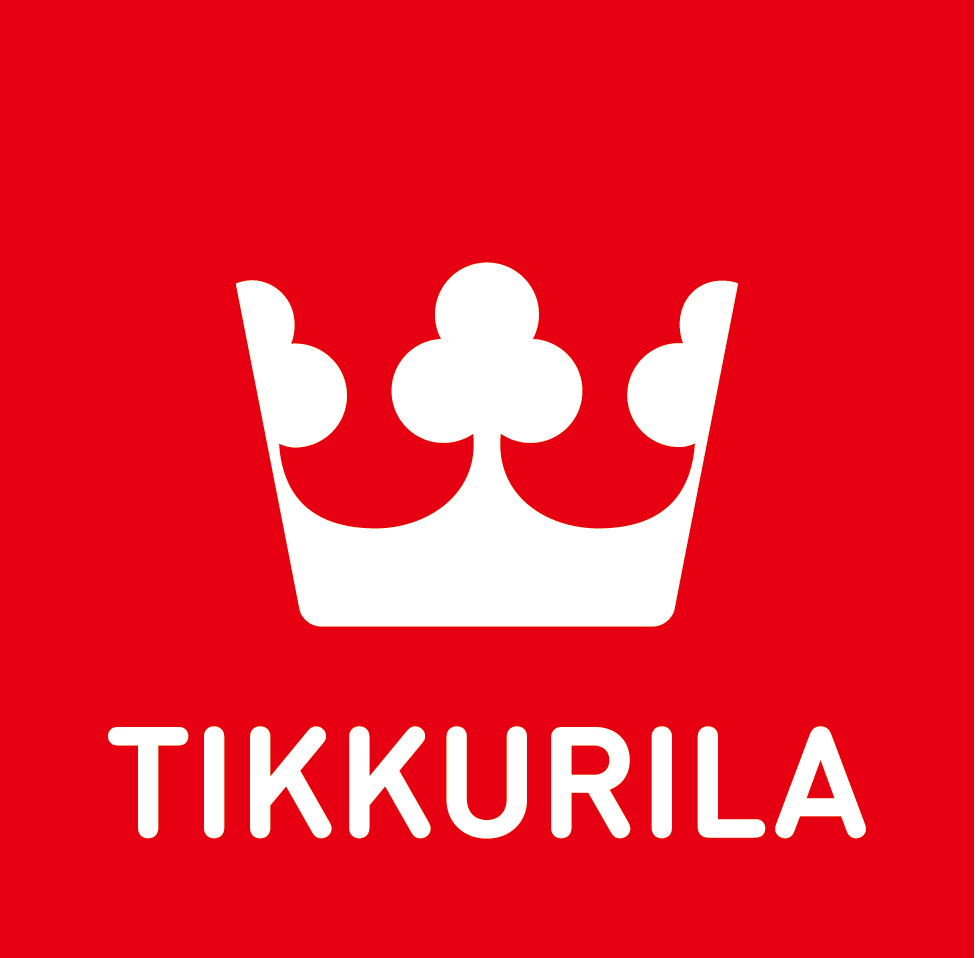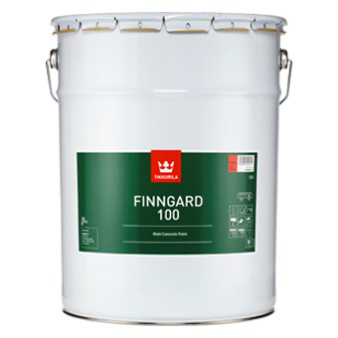Description
| Country of origin: | Finland |
| Description: |
Waterborne, alkali-resistant acrylic paint with self-cleaning function, suitable for painting concrete structures, building boards, gypsum surfaces and reinforced precast concrete panels. Finngard 100 is also applicable to painted surfaces (as long as the coating is still closely integrated with the substrate). However, it is not suitable for use on surfaces previously treated with lime water, silicate or flex coating. Maximum particle size approx. 0.1 mm. |
| Recommended uses: | Villas, houses, as well as residential, office and industrial buildings, warehouses, etc. |
| Technical Data: | |
| Coverage: | 4-8 m2 / litre (in case only one coat is applied), depending on the roughness and porosity of the surface to be coated as well as painting method and conditions. |
| Solid volume: | about 45% |
| Density: | Approx. 1.5 kg/l |
| Thinner: | Water (maximum dilution: 10%) |
| Application method: | Brush, roller or spray application. For airless spray, use a 0.027 “- 0. 029” nozzle |
| Recoatable time: | Drying time at 23 ° C and relative humidity of 50%: Recoatable after 12 hours. |
| Colour: | See A and C paint colour card |
|
Weather resistance:
|
Good, and also suitable for coastal, industrial and commercial areas with strong alkali resistance. Prevents the penetration of rain and splashes into the construction. Allows water to come through from inside as vapour. |
| Application Details: | |
| Application conditions: | The surface to be treated has to be dry, the temperature of the air at least +5 °C, and the relative humidity of the air below 80 %. Do not paint under strong sunlight. |
|
Pretreatment:
|
Uncoated surfaces: Remove dust, fibers and salts. If the hard concrete surface is to be constructed at the end of the hottest season, the excess moisture in the building has evaporated. If the exterior wall is bright and flat, it needs to be mechanically manipulated, such as by sanding the surface, so that it has sufficient adhesiveness. Relatively loose or softer concrete surface requires sanding, metal brushing or high-pressure sandblasting. If it is a new plaster surface, wait for it to harden for one or two months before processing. Previously painted surfaces: Remove any residue coating attached to the surface. Rinse the mouldy or mossy surface with a mildew remover. Choose the method of removal according to solidity of the substrate and type of paint to be removed (e.g. steel-brushing, high-pressure washing with hot water or water-sand blasting). Remove flaking or poorly attached paint coats from previously painted surfaces. Check the joints between different cement boards, and make the necessary repairs. If possible, open a small gap in the concrete to remove the steel corrosion and then repair with plaster. |
| Repair the wall: | Cracks, holes and other defects on the wall should be suitably filled with plaster. For walls plastered with high cement content, use a plaster containing cement as filler. Allow the repaired areas to dry before priming. |
| Priming: | In case of a loose wall surface, the use of primer will reinforce it and enhance the adhesiveness of the top coat. For a newly plastered wall with high permeability, an uncoated old concrete surface, or a reinforced precast concrete panel, two coats of primer are to be applied in a short duration while the first coat is still wet. For previously painted walls with chalking surfaces, one or two coats of primer should be applied. Attention: Finngard 100 is not suitable for use on surfaces previously coated with lime or silicate. The application of primer will dim the surface. It is necessary to figure out a reasonable priming method and the quantity of primer to be used. |
| Painting: | Stir Finngard 100 well before use. Reserve enough paint from the same batch for a large single surface to avoid possible colour differences. In case two different batches of paint are used, they should be mixed in a 1:1 proportion for application in a selected overlapping area, which should be as inconspicuously located as possible. If the existing wall surface is in darker colour, and it is to be coated in a lighter shade, then the first coat of Finngard 100 should be painted in white before the second coat is applied in a lighter colour. Finngard 100 can be applied early the next morning after priming, and is recoatable after an interval of 12 hours. In general, no thinning is required for Finngard 100, but it can be thinned with 10% of water if necessary. Stir it well after thinning. |
| Tool cleaning: | Wash with water immediately after use. |
| Environmental and safety ratings | (according to EC Directive 88/379 / EEC): Not hazardous to health; handle with care. Prolonged exposure of skin to the paint and long-time breathing in paint sprays should be avoided. |






